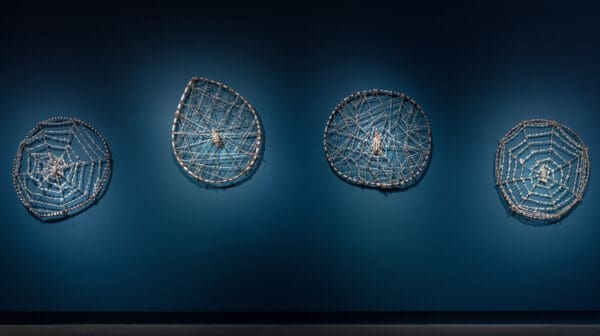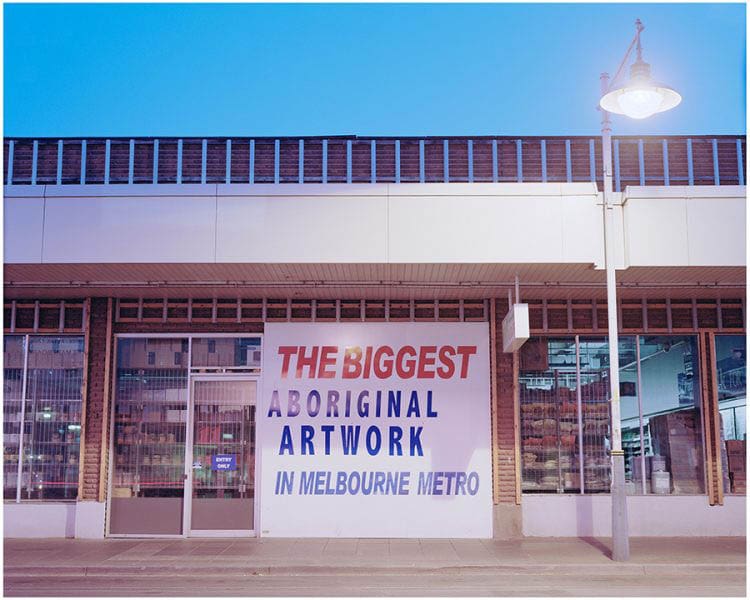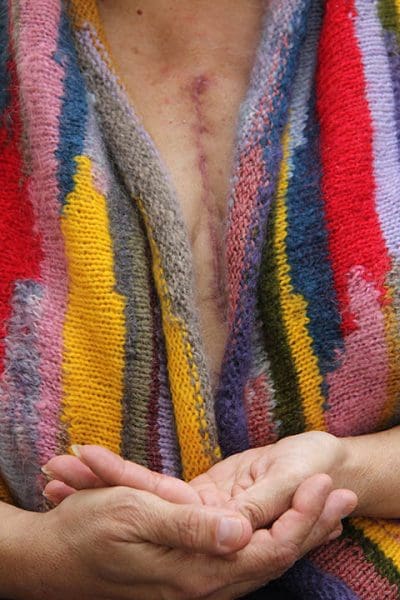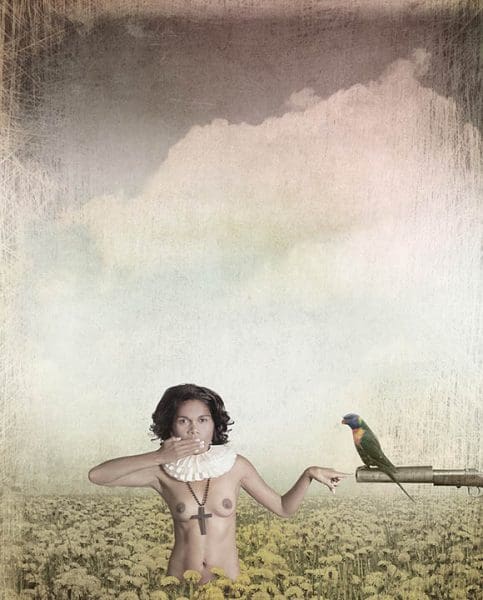
Piercing the veil
A new exhibition at Buxton Contemporary finds a rich complexity in the shadowy terrain between life and death.

Steven Rhall, THE BIGGEST ABORIGINAL ARTWORK IN MELBOUNRE METRO, 2014, inkjet print, 140 x 114 cm.

Paola Balla, Untitled, 2013, photographic pigment print on Hanemuhle rag, 101 x 70 cm.

Michael Cook, Broken Dreams #6, 2010, Inkjet print (Epson Ultarchome K3 inks in Hahnemuhle photo rag bright white), 124 x 100 cm (ed 5/8) Courtesy of Andrew Baker.
Photography is an important medium for Aboriginal people. According to Kent Morris, curator of Reframed an exhibition of contemporary Aboriginal photography at the Incinerator Gallery, the medium holds multiple significances. One is that it acts as a form of remembrance for First Nations people who have experienced varying degrees of forced separation and loss. Morris uses his Aunty Dora as an example; her lounge room walls are covered from floor to ceiling in family photographs.
Because of fragmented histories or disconnection from family and culture, many Aboriginal people have a strong connection to photography, says Morris.
“Photographs are like gold. They’re shared and they’re treasured because getting the family back together through photos and understanding your history through these photos is so crucial for so many of us.”
Furthermore, photography is quickly being taken up as an empowering medium that conveys diverse Aboriginal voices.
There is no dominant opinion or viewpoint in the photographs exhibited in Reframed. Rather, these images represent the heterogeneity of what Morris says are the “lived experiences” encompassed by a new wave of Aboriginal photographers. These photographs build upon work important Indigenous artists such as Destiny Deacon and Brooke Andrew.
The diverse line-up of artists in Reframed, Paola Balla, Bindi Cole Chocka, Michael Cook, Genevieve Grieves, Dianne Jones, Kent Morris, Steaphan Paton, Steven Rhall, Warwick Thornton, James Tylor, Peter Waples-Crowe, Arika Waulu, and Raymond Zada, move to subvert a singular reading.

Thornton’s diptych Luka, 2015, can be read in various ways simultaneously. The first image depicts a young Aboriginal woman with Coca Cola cans strapped to her chest in the fashion of a suicide bomb, while the second image depicts the same woman holding the number seven “killer” boomerang. The work, says Morris is “about the incredible health issues faced by Indigenous people in this country. But when I saw it, and the way that she is holding it [the boomerang], I saw it as still having that sense of a connection to culture and that is the way forward.”
Ultimately, says Morris, Reframed seeks to communicate. It is about a generous desire to share stories. As the title suggests, it is an exhibition that avoids clear-cut binaries such as ‘urban Aboriginal’ or ‘post-colonialism,’ preferring instead to present works that invite fluid interpretations. “Now that we have taken that power to be behind the lens,” as Morris says, the Indigenous photographers in Reframed challenge the viewer to create nuanced readings of the works. And Morris hopes this will facilitate a fruitful dialogue between black and white Australia.
Reframed
Incinerator Gallery
3 June – 24 July